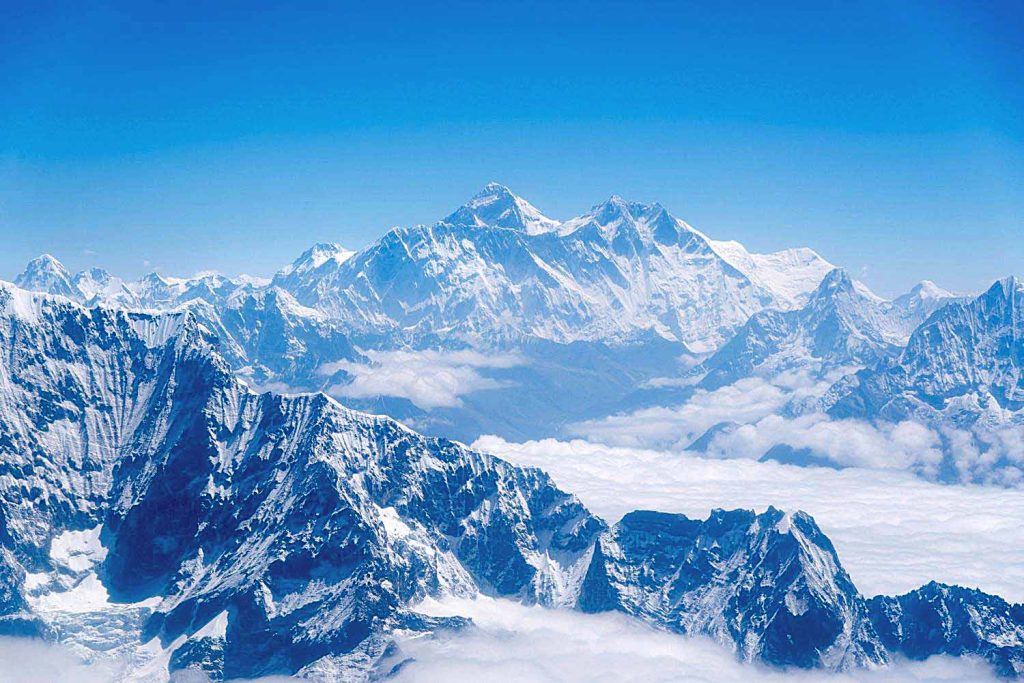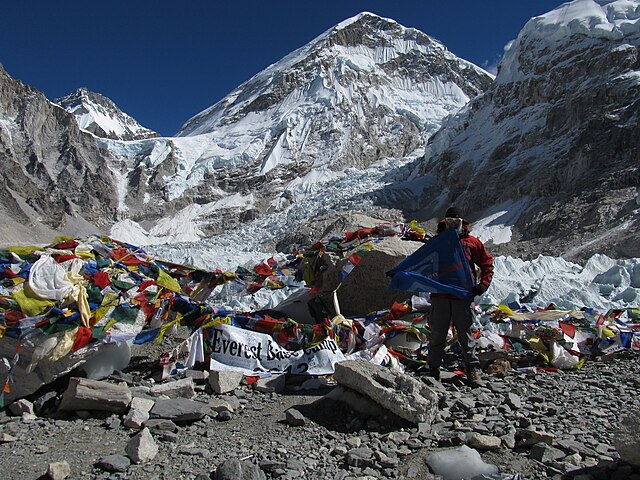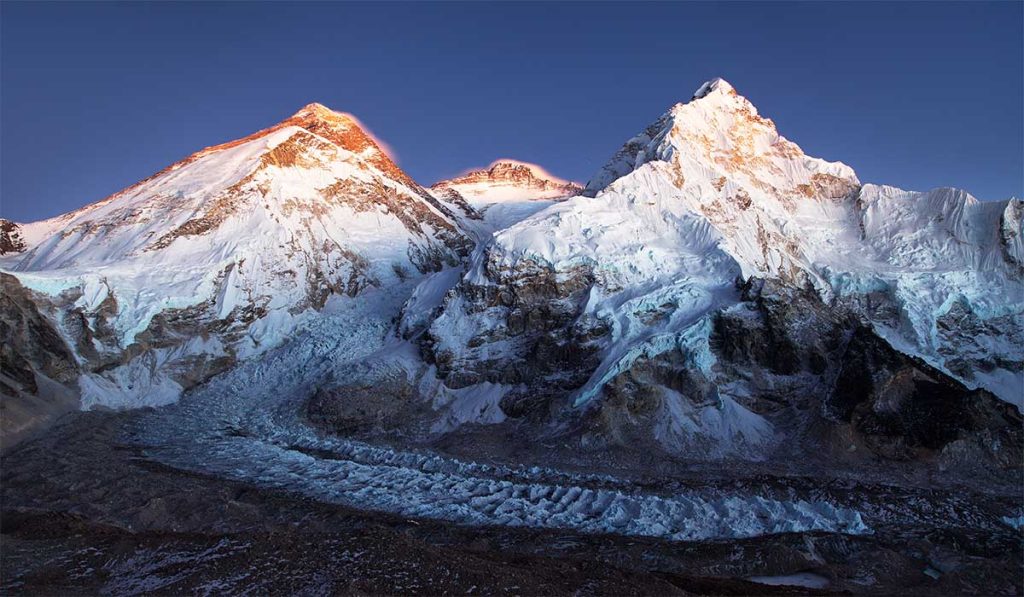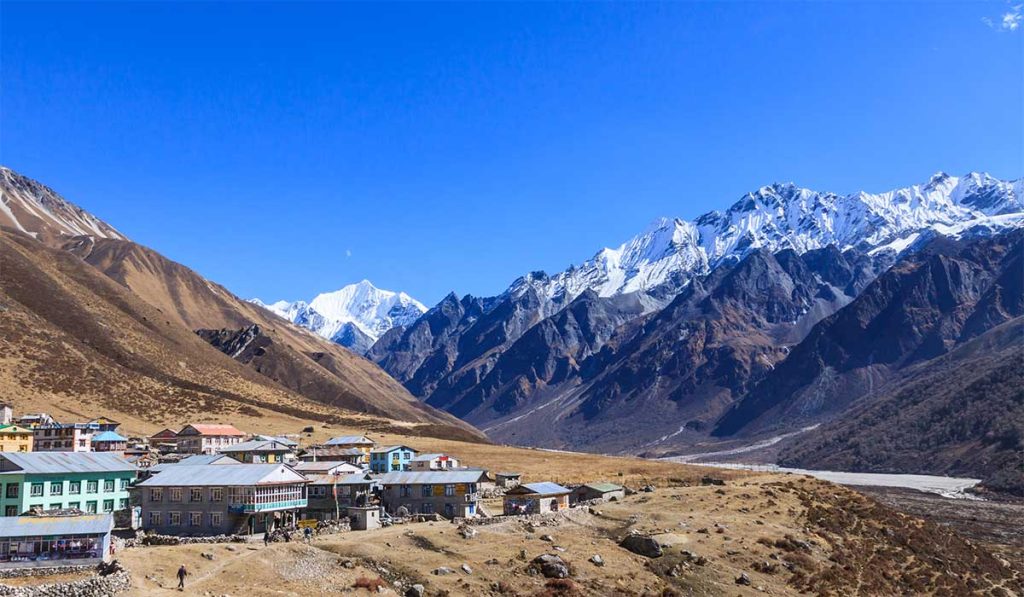
Mount Everest, the world’s greatest peak, has always been regarded as the symbol of exploration, endurance, and human ambition. With a majestic height of 8,848.86 meters above sea level, it attracts thousands of climbers and hikers each year. But the effect of climate change and human waste, questions about the stability, safety and future of Mount Everest..
In recent years, Everest’s delicate ecosystem has been threatened and reshaped by the melting glaciers, thinning snowpack, and unpredictable weather patterns. At the same time, the rise of Everest tourism has created overcrowding, pollution and logical tension both on the route and the surrounding communities. The notorious Mt Everest traffic jam of 2019, where the climber were caught in a deadly queue near summit, was a global wake-up call.
Today, the question is no longer “Where is Mount Everest ?” but “Where is Mount Everest heading to?” And what is its future?
Climate Change on Everest: The World’s Highest Glacier is Melting
Mount Everest climate change is no longer a theory- this is a reality, which is faster than predicted. At an altitude of over 8000 meters, even the Southern Col, once thought to be permanently frozen, is now melting quickly. A recent study has shown that this glacier has lost more than half of its ice in just 25 years, mainly due to warming air, intense sunlight and low snowfall.
This is not normal; these results are alarming for the future of Mount Everest:
- Crevasses and snow walls are collapsing in the season.
- The rate of rockfalls is continuously increasing.
- Popular climbing routes such as Khumbu Icefall are becoming more unstable and deadly.
Even Everest Base Camp, which sits on the Khumbu glacier, is moving. The glacier is thinning and shifting, forcing the campaign teams to re-evaluate its long-term viability as a staging area.
What is it signaling beyond mountaineering?
Mount Everest is not just signaling the changes in itself but the whole world. It is now a global climate indicator of what rising temperatures are doing on the Earth.
If climate change on Mount Everest continues at this speed, the mountain may become unclimbable for future generations, not only because of weather, but because of the snow that makes Everest Everest will disappear over time.

Photo by Andreas Gäbler via unsplash
Is Mount Everest dangerous to climb in 2025-2026?
Absolutely—and more than this used to happen. While Everest has always presented extreme conditions, the risk is now complicated by modern challenges such as climate change, overcrowding, and commercial pressure. The romantic image of the conquering Everest is quickly being overshadowed by sad headlines and tragic failures.
Climate instability: Less predictable, more fatal
In the 2020s, climate change on Mount Everest is making it more unstable than ever. The shifting Jet streams, furious storms, and shrinking clear summit windows are the proofs.. One clear weather window is difficult to get even in May and October forcing climbers to rush their climb which is often dangerous.
Death Zone is still fatal
The Everest death zone is over 8000 meters, where oxygen is so limited that the human lungs suffocate, and survival without oxygen becomes almost impossible. Diseases related to height, such as High Altitude Pulmonary Edema (HAPE) and High Altitude Cerebral Edema (HACE), are the leading cause of death. The risk is the same even for experienced climbers. There are stories where even climbers with prior experience faced confusion and hallucinations.
The Overcrowding and Summit Bottlenecks
Today’s danger is not only nature but also humans themselves. The notorious Mount Everest Traffic Jam of 2019 resulted in the death of hundreds of climbers, who were unable to move on or retreat. Many people waited in line, not because of the weather, but from fatigue, hypoxia, and exposure. As long as the number of permitted climbers is the same and more inexperienced climbers try the top, these deadly queues cannot be controlled.
Melting snow and route collapse
Khumbu Icefall and other parts of the south route are becoming more unstable due to warm temperatures. Glacial melt is causing seracs (ice towers) to collapse more frequently and the trail, which were once a solid route is now riddled with crevasses. Guides report that even the seasoned Sherpas are rethinking of the safety of some sections.
Human Waste Crisis: Serious Concern for Future of Mount Everest
As more climbers try to reach the top of the world each year, a matter becomes difficult to ignore: the Everest waste problem. What was once a remote and pristine peak is now facing an increasing environmental crisis fueled by human impact.

Human waste on Mount Everest: Frozen in time
One of the most serious and often ignored issues on Mount Everest is human waste. In high camps such as Camp II, III, and especially Camp IV (South Col), climbers often defecate in open snow or in plastic bags that are never retrieved. In a temperature as cold as that, the waste does not decompose—it just gets accumulated. Research estimates that 8000 kg (17,600 pounds) have been built up on Everest in recent decades.
Trash and abandoned equipment
In addition to the excreta, Mount Everest is seriously affected by the pollution problem. Following are the trash with their statistics of accumulation in the Everest region, as reported by the Sagarmatha Pollution Control Committee (SPCC).
| Type of Waste | Estimated amount of accumulation | Common Location |
| Oxygen Cylinder | 3000+ | Khumbu Icefall |
| Tents and gear | 200+ units | South Col |
| Food wrappers and cans | 25-30 tons | All campsite, Base camp |
| Undecomposed bodies | 200+ remaining | Along the northeast and southeast routes |
| Human Waste | 8000+ Kg | Camp II, Camp III, South Col |
How does climate change make the future of Mount Everest Worse?
As the glaciers melt due to global warming and climate change, the decade-old waste that heaven buried inside the snow gets exposed. The avalanches and several other factors make it leak into the stream nearby, which is a threat not only to the environment but also to the local communities living downstream.
These exposed decades-old trash are lessons for the new climbers to learn that the remnants of our ambition might not threaten the ecosystem of the mountain.
Will Mount Everest be closed in the Future?
With the growing crowd and climate change on Everest, a major question arises, which is also important. – Can climbing on Everest be forbidden? It has never happened before; however, when we try to analyze the future of Everest, it is possible.
So then, why would Everest be closed?- Here are the possible reasons:
- Route damage due to climate change
One strong reason why Everest may face a ban on its summiters in the future is the damage to the route. If climate change continues at its current pace, it may ruin the route to the Everest summit, especially at the advanced camps. This could result in years of bans for its repair or finding a new route.
- Overtourism and Mismanagement
The flow of the permit has brought chaos to the mountain. In recent years, Nepal has issued over 1200+ climbing permits. These basic reasons for overcrowding on Everest, that can potentially cause a human traffic jam like that of 2019 are always in controversy.
- Mountain death and safety concerns:
Due to inexperience, overcrowding, or commercialism competition, the death on Everest is still a horrific fact. Just in 2023, 17 climbers died. If such scenarios continue, and the death rate is not controlled, the climbing of Everest may be closed temporarily or permanently, undermining human rights.

Visual Data and Statistics: Everest by the Numbers
| Annual Climbers and Permits Issued | |
|---|---|
| 2023 | 1,176 permits issued (highest ever) |
| 2019 | 876 permits issued (led to the infamous traffic jam) |
| 2000 | Less than 200 permits issued |
Trend: The number of climbers has increased five times in just two decades. This is putting immense pressure on the mountain’s delicate ecosystem as well as the future of Everest.
| Everest Deaths by Year | |
|---|---|
| 2023 | 17 climbers died |
| 2022 | 4 deaths |
| 2019 | 11 deaths (during summit queues) |
| Historical average | 5 deaths per year |
Insight: Years with high permit numbers often correlate with higher fatalities, mostly due to overcrowding, inexperience, and weather unpredictability.
Climate Change Impact Timeline
| Year | Notable Impact |
| 1990s | The Khumbu glacier began to thin visibly |
| 2000s | Icefall instability increased |
| 2015 | Everest Base Camp shifted 40 meters due to glacier melt |
| 2022 | A study shows the South Col glacier has lost 55% of its ice in 25 years |
Conclusion: Climate change is reshaping the future of Everest faster than predicted, with direct impacts on route safety and glacier structure.
How is Smart Use of Technology Shaping Mount Everest’s Future?
Modern challenges in the world’s highest mountain require modern solutions – and that’s where the technology comes. From satellite tracking to solar energy, innovation now helps to reduce the environmental impact of the growing crowd on Everest while keeping the campaign safe and more efficient. Here you are answered about how technology can shape the future of Everest mountaineering and help in the campaign to be safer and enjoyable.
Drone, Weather sensor, and Rescue operations
Some climbers are now equipped with light satellite beacons and real-time GPS trackers; if something goes wrong in the death zone, it immediately alerts to the lower camps..
In addition, the use of drones is helping in:
- Scouting the avalanche-prone areas
- Drop the emergency supplies
- Monitor the glacier movement
- Mapping the unstable area.
The weather sensors that are placed at the key points along the route provide updates about the jet streams, air velocity, and the temperature to help the teams decide when to summit..
5g Internet in Everest Base Camp
Yes—Everest Base Camp has a 5G connection. In 2020, China Telecom installed a 5G tower on the north side of Everest, while NCELL brought high-speed service to the Southern Base Camp. This technology allows:
- Instant update of weather and route
- Live-streaming with high resolution
- Medical teleconsultations for injured climbers
- Monitoring of environmental conditions
This progress also helps climbers keep in touch with families, sponsors, and support teams around the world.
Eco-friendly Everest Base Camp and Green Technologies
The push for eco-friendly Everest trekking is gaining attention, which is important as well. Following this trend that can shape the better future of Mount Everest, Many expeditions now work with
- Solar-driven cooking system: These are used at the Everest Base Camp and higher camps to reduce the need for firewood and gas canisters.
- Biodegradable waste bag: Trekkers are encouraged to use a portable and biodegradable waste bag to carry out human wate and trash.
- Low-impact trek culture: This includes trekking or climbing Everest in a responsible way, like limiting the use of plastic, using reusable gear, and refilling water bottles.

Regulation and Government Policy
The future of Mount Everest depends a lot on how it is controlled. In recent years, the pressure Nepal has to faced is increasing rapidly after the events of overcrowding and unqualified climbers, leading to deadly accidents.
To solve this, the government has proposed several reforms:
- Experience requirements: Climbers may need to prove that they have summited a peak of at least 6,500 meters in Nepal before applying for Everest permission.
- Compulsory insurance and health check-up: All climbers should take sufficient rescue insurance, and health services may soon become mandatory.
- Mountain climber restrictions: Discussions are ongoing to limit the number of daily summit attempts in the peak season to reduce dangerous human traffic jams in the mountains
- Stricter Guide and Agency Rules: Only certified and experienced guiding companies can be allowed to conduct Everest campaigns in the future.
- Change of permit fee: The existing permit fee – $ 11,000 has been proposed for change, either to reduce demand or allocate more funds for waste management and rescue infrastructure.
- Enforcement of environmental deposits: Mountain climbers must bring back a fixed amount of waste to get the refunds of their specific refundable deposits.
Despite this effort, enforcement remains inconsistent due to political pressure and mountains sinificant economic value. The challenge lies in balancing the safety of the climber and protection of the environment.
Strong rules can ensure that Everest in future remains both a well-known adventure and a permanent destination for next generations. But they must be properly enforced.
Media Influence on the Future of Everest
Mount Everest is no longer just a mountain – it is now a major part of global media. Every year, thousands of photos and videos with Everest Base Camp and Summit are shared on Instagram, YouTube and even Netflix documentaries.
Many people are motivated to climb Everest after seeing these Everest documentaries or after seeing the beautiful summit images. This is the Everest Instagram effect, where social media makes Everest as a simple and exciting adventure.
However, not all media show the real challenges in the mountains. Many videos do not show danger, death, garbage, or Sherpa’s efforts. This is why the call for more responsible illustrations of Everest in the media is necessary. Climbers, influencers, and filmmakers should show both the beauty and the dark side of climbing Everest.

Conclusion: Protect the future of Mount Everest
Mount Everest is a treasure for the whole world. To protect this, we need global cooperation from climbers, governments, communities, and environmental groups. Everyone should work together to keep the mountain clean and shape a better future of Mount Everest.
The challenge is to find a balance between adventure and nature. People will always dream of climbing on Everest, but we should ensure that tourism does not harm the mountain.
In many ways, Everest is also a test of our responsibility. Can we protect it for future generations? Can we enjoy the beauty without destroying it? The answer lies in honoring smart regulations, permanent travel, and nature.

